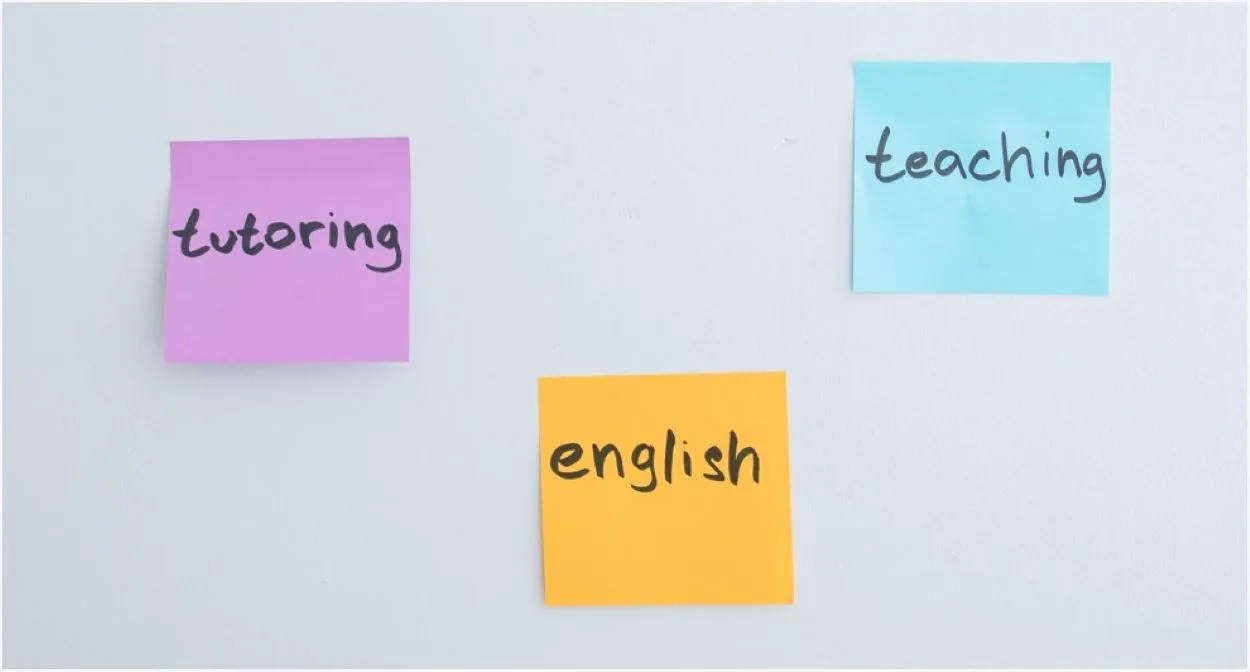Language is an organized system of words and symbols for communication. Every language has its charm, and the English language is no exception.
Language acquisition is a time-consuming, complex task that demands dedication, focus, and strenuous effort. During this process, grammar functions like a cherry on the top.
People face many problems with grammar when reading, writing, and speaking, most notably in tenses. It’s simple and easy to grasp the tenses, but it’s far more challenging to manage them in the text.
All three tenses are equally significant, whether present, past or future. You may have noticed terms like something is, was, or has done while reading any piece of writing. Some questions must have arisen in your mind: Is everything in this list correct? Is it permissible to use all of these? In which context should they be used? What’s the distinction between these three options?
The phrase “It is done” is employed when you have done something recently and you’re informing someone that “It is done”.
The other phrase “It was done” signifies that something was done in the past and you’re telling about it now. Whereas, the last phrase “It has done” is in the present perfect tense. It refers to something that you have done just now.
This article will further answer your queries and clarify the proper usage of these tenses with the help of examples. It includes lessons on the differences between these three terms, which will help you comprehend their science because utilizing the wrong syntax can create hurdles during communication. In the end, you will be able to use these three terms correctly.
Why Is Time Frame Necessary In Grammar?
It is vital to remember that English is a chronological language. Understanding the time frame is necessary for English because English speakers need information about when a particular activity or occasion happened.
English speakers use verb tenses to express chronology or the order in which events and incidents occur. So timing is essential in understanding the content of a story.

Let’s Clear The Term “It Is Done” Through A Sentence
In English, using a passive voice in the present tense is helpful when the outcome is more important than figuring out who is the performer of an activity. Thus the passive voice phrase “is done” indicates that the task has been accomplished but the performer is not known.
With the help of an easy real-life example, let us understand the actual usage of “is done” in a sentence.
Suppose a mother is making a cheesy pizza for her daughter’s birthday. Meanwhile, someone knocks at the door. She leaves the kitchen, saying to her daughter, “Pizza is done. Take it out of the oven and put some more chili sauce on it”.
From the above example, it’s clear that “is done” is a phrase that indicates the completion of a task/work. It doesn’t tell anything about the timings of a particular action.
Let us clear through another example.
A painter is painting a wall of a room. After finishing one side border, he says, “It is perfectly done,” now, I will paint the other side.
Both these examples show the accomplishment of specific tasks in the present.
How Can You Define The Term “It Was Done” In A Sentence?
The phrase “was done” is also an example of passive voice, demonstrating task completion in the past. It also tells about another job on the list.
Now let’s look at a situational example. Suppose there is a man named Peter. He is the father of three children. He planned to take his wife shopping one day. His children also expressed an interest in accompanying their mum and dad.
As a result, Peter took his entire family to the market. They returned home after finishing their shopping. Three days later, his wife reminded him that they had forgotten to buy something vital. “The grocery shopping was done on Friday,” she said, “but we forgot to buy certain household items.”
By the way, check out my other article on the difference between sequential and chronological order next.
Let’s Clarify The Phrase “It Has Done” Through A Sentence?
The phrase “it has done” is an example of a present perfect tense form. It describes the connection between anything in the past and present. It conveys information about an action that occurred in the past. However, Its time frame is not known, it may be about yesterday or a moment before. e.g. I have eaten it before. You don’t know whether the person ate it last week or a few minutes before.
To clear your concepts more on it, take an example. “World No Tobacco Day” takes place on 31st May, which provides an opportunity to raise awareness about tobacco’s hazardous and lethal consequences because tobacco has caused/done destruction to the environment and killed people.
Have you noticed that it’s telling you about something that happened in the past?. Moreover, it shares a valuable message to avoid the consequences in the present. You can use the tense “Present Perfect” in this way. It doesn’t matter when an incident or action occurs, but it’s essential to know what will happen afterward.

Differences Between Is, Was, Or Has Done
We will now discuss some examples to demonstrate the apparent differences between tenses such as is, was, and has done. After that, you’ll be able to spot and correct errors with ease, and you’ll be perfect in these tenses.
(Something) Is Done Vs. Has Done Vs Was Done
Read the example given below. It will further guide you about the tenses with the time frame of action.
Example: In 2014, 3 new projects had started by ABC company.
This sentence is incorrect on two levels. It is not permissible to use a numeral at the beginning of the sentence. Put a phrase or two in front of the digit, such as “About three” or “In total, three.”
The second flaw in this statement is that the passive verb tense should be simple past (was/were started), not present perfect (has been done).
Correction: In 2014, a total of 03 projects were started by ABC company.
If the projects have started now, the example will turn to present tense.
Whereas “Has been started” is a current tense signifying an activity that previously occurred at some vague point. When timings are there, you shouldn’t utilize this strain. Use the basic past tense “was/were.” Similarly, when something is already in its completion phase, it is preferable to use the present tense in this case.

Something Is Done Vs. Was done
In sentences, “is done” refers to the recent completion, or it’s a customary practice. Whereas “it was done”alludes to the completion of a task some time ago. For instance, an example sentence for it can be:
The car got dents in an accident.
He was done with his duty last night.
Where To Use All Three?
It’s time to revise all three again through an imaginary conversation between the CEO and employee of XYZ company.
For example, an employee is telling the CEO about a report.
“I have finished it, sir.” He says.
He did it a couple of seconds prior. He is not specifying any time reference to the subject included regardless of whether it has finished at some point back.
Now, for instance;
CEO asks: Did you finish the report. Have you added all data?
The employee replies: Yes, It’s finished, and I have added all the essential data.
The employee states that the report is complete but does not provide any information about when it was completed.
It was completed – When something we did in the past and provide a time reference for the item in question, we use this phrase.
Again, for instance :
CEO asks: Did you finish the report?
Employee: Yes, It was finished two hours/days/months prior.
Here he says that the report writing has already ended and informs about the exact finishing time.
It has done – It is grammatically incorrect to use the” has” form in this situation; instead, use “It has been completed,” which is used when the detached voice rather than the dynamic voice is needed in the sentence.
Here time reference isn’t needed.
For instance :
CEO asks: Did you finish the report?
The employee replies: Yes, It has been completed.
Are They All Grammatically Correct?
A question can now arise in the mind: Are they all grammatically correct?. For this, we need to be clear that everything relies upon the circumstances. The sentence “She is washing the clothes” signifies a continued action. Whereas, “she completed the laundry swiftly.” means that she did work in a short measure of time.
Similarly, the tense “has done” implies that we can’t change previous actions; we are more interested in the consequences and corrections. All these are grammatically fine, but it depends on your situation.
Use Of All Three In Affirmative, Interrogative, And Negative Statements
- I have completed my work.
- She got face marks in an accident.
- You would receive a reward if you did that.
- I shouldn’t have done that.
- Have you finished the assignment?
- Do you have any idea what he’s done?
- It is obvious what has happened that day.
- Which gift wrapping do you prefer?
- What have you done with my cupboard?
- She had to have done it the day before yesterday.
- He couldn’t possibly have done such a thing.
- How do you want your steak cooked?
- Have you ever worked as a volunteer?
Bottom Line
- Languages help in uniting people. All languages are so attractive, and English is one of them. But what makes every language unique is its grammatical rules.
- The grammar of any language has an impact on communication. If you know how to use it correctly, you can efficiently deliver your ideas to the audience.
- This article summarizes how to use present, past, and future tense with “done,” which is the past participle of doing something.
- It is easier to learn the tenses, but how to use them in sentences is our main concern. The article highlights the differences between something that has, is, and was done. It clarifies everything about their usage in the text through several examples.
- Even storytellers use these tenses effectively to share the incidents and their time and provide information about the person performing any action.
- This article is for informational purposes. It will help you to become grammatically sound.
- It’s time to test your English.
Related Articles
- “Seems Like” VS “Looks Like”: Difference Explained
- How Would You Describe the Difference Between a Hope, a Wish, and a Dream (In-Depth Explanation)
- What Is The Difference Between “es”, “eres” And “está” In Spanish? (Comparison)
- What Is The Difference Between Schwag And Swag? (Answered)
- Cracking The Difference Between “Fall On The Ground” And “Fall To The Ground”

